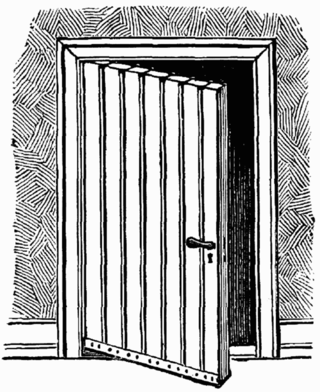
A door is a hinged or otherwise movable barrier that allows ingress (entry) into and egress (exit) from an enclosure. The created opening in the wall is a doorway or portal. A door's essential and primary purpose is to provide security by controlling access to the doorway (portal). Conventionally, it is a panel that fits into the doorway of a building, room, or vehicle. Doors are generally made of a material suited to the door's task. They are commonly attached by hinges, but can move by other means, such as slides or counterbalancing.

A derailleur is a variable-ratio bicycle gearing system consisting of a chain, multiple sprockets of different sizes, and a mechanism to move the chain from one sprocket to another.

A hinge is a mechanical bearing that connects two solid objects, typically allowing only a limited angle of rotation between them. Two objects connected by an ideal hinge rotate relative to each other about a fixed axis of rotation, with all other translations or rotations prevented; thus a hinge has one degree of freedom. Hinges may be made of flexible material or moving components. In biology, many joints function as hinges, such as the elbow joint.

The Kawasaki Ninja ZX-7R was a motorcycle in the Ninja sport bike series from the Japanese manufacturer Kawasaki produced from 1989 until 2003. It remained largely unchanged through its production. Kawasaki used inverted forks starting in 1991, added ram air using a single tube, and in 1996, twin tube ram air and Tokico six piston brakes and fully adjustable suspension. From 1989 through 1995 in the US market, Kawasaki called the ZXR-750 and ZXR-750R the ZX-7 and ZX-7R respectively. Starting from 1996 Kawasaki dropped the ZXR name worldwide and the former ZXR-750 was now ZX-7R and the limited edition homologation special ZXR-750R/ZX-7R started in 1991 was now ZX-7RR.
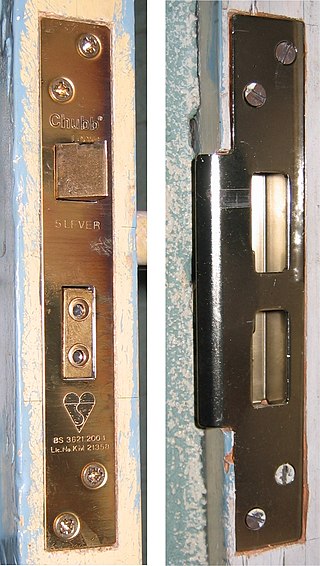
A mortise lock is a lock that requires a pocket—the mortise—to be cut into the edge of the door or piece of furniture into which the lock is to be fitted. In most parts of the world, mortise locks are found on older buildings constructed before the advent of bored cylindrical locks, but they have recently become more common in commercial and upmarket residential construction in the United States. The design is widely used in domestic properties of all vintages in Europe.
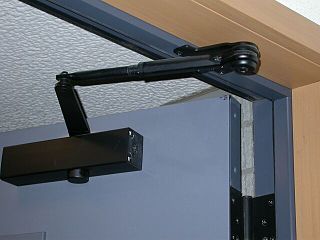
Door furniture or door hardware refers to any of the items that are attached to a door or a drawer to enhance its functionality or appearance.

A door closer is a mechanical device that regulates the speed and action of a door’s swing. Manual closers store the force used to open the door in some type of spring and reuse it to close the door. Automatic types use electricity to regulate door swing behavior.
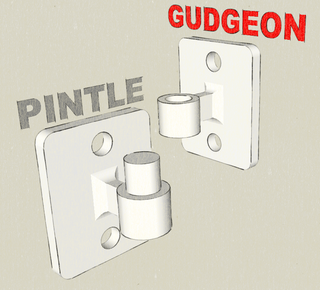
A gudgeon is a socket-like, cylindrical fitting attached to one component to enable a pivoting or hinging connection to a second component. The second component carries a pintle fitting, the male counterpart to the gudgeon, enabling an interpivoting connection that can be easily separated. Designs that may use gudgeon and pintle connections include hinges, shutters and boat rudders.

A latch or catch is a type of mechanical fastener that joins two objects or surfaces while allowing for their regular separation. A latch typically engages another piece of hardware on the other mounting surface. Depending upon the type and design of the latch, this engaged bit of hardware may be known as a keeper or strike.
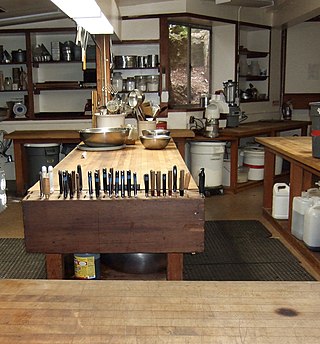
Kitchen cabinets are the built-in furniture installed in many kitchens for storage of food, cooking equipment, and often silverware and dishes for table service. Appliances such as refrigerators, dishwashers, and ovens are often integrated into kitchen cabinetry. There are many options for cabinets available at present.
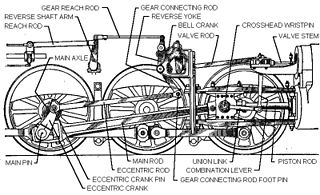
After about 1910, the Baker valve gear was the main competitor to Walschaerts valve gear for steam locomotives in the United States. Strictly speaking it was not a valve gear but a variable expansion mechanism adapted to the Walschaerts layout replacing the expansion link and sliding die block. The Baker arrangement used more pivot bearings or pin joints, but avoided the die slip inherent to the expansion link, with the aim of lessening wear and the need for service; it could also facilitate longer valve travel.

A garage door is a large door to allow egress for a garage that opens either manually or by an electric motor. Garage doors are frequently large enough to accommodate automobiles and other vehicles. The operating mechanism is usually spring-loaded or counterbalanced to offset the door's weight and reduce the human or motor effort required to operate the door. Less commonly, some garage doors slide or swing horizontally. Doors are made of wood, metal, or fiberglass, and may be insulated to prevent heat loss.

An electric strike is an access control device used for door frames. It replaces the fixed strike faceplate often used with a latch. Like a fixed strike plate, it normally presents a ramped or beveled surface to the locking latch allowing the door to close and latch just like a fixed strike would. However, an electric strike's ramped surface can, upon command, pivot out of the way when the lock on the door is in the locked position and the door is opened, allowing a user to pull/push the door to open it without operating the mechanical lock or using a mechanical key. After the door is opened past the keeper, the keeper returns to its standard position and re-locks when power is removed or applied, depending upon the strike's configuration.
A motorcycle's suspension serves a dual purpose: contributing to the vehicle's handling and braking, and providing safety and comfort by keeping the vehicle's passengers comfortably isolated from road noise, bumps and vibrations.

A semi-trailer is a trailer without a front axle. The combination of a semi-trailer and a tractor truck is called a semi-trailer truck.

Bicycle suspension is the system, or systems, used to suspend the rider and bicycle in order to insulate them from the roughness of the terrain. Bicycle suspension is used primarily on mountain bikes, but is also common on hybrid bicycles.

Window shutter hardware, usually made of iron, are hinges and latches that attach to the shutter and a window frame. The hinges hold the shutter to the structure and allow the shutter to open and close over the window. The latches secure the shutter in the closed position. Tie-back hardware can be used to hold the shutter in the open position.

A lockset is the hardware and components that make up the locking or latching mechanism that can usually be found on a door or other hinged object but can also include sliding doors and dividers. The components of a lockset can include the door handles, latch bolt, dead bolt, face plate, strike plate, escutcheon, thumbturn, push button, turn button, and other trim. The lockset and associated hardware typically defines a door's function and how a user could access the two adjacent spaces defined by the opening associated with the lockset.

A folding bicycle is a bicycle designed to fold into a compact form, facilitating transport and storage. When folded, the bikes can be more easily carried into buildings, on public transportation, and more easily stored in compact living quarters or aboard a car, boat or plane.

Lockrods are mechanical devices used to secure swing doors on the back end of trailers. They are used for semi-trucks, containers, and small specialty trailers.



















